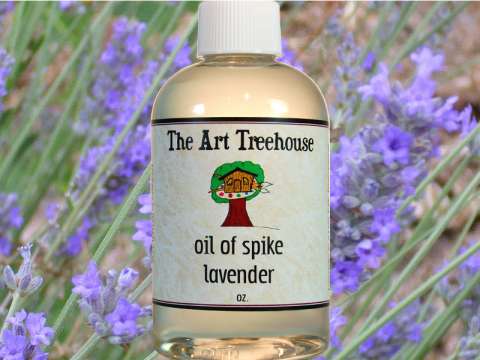SPIKE LAVENDER: A SOLVENT-THINNER OR AN OIL-MEDIUM?
Recently, several people have asked this question! Turpentine, acetone, and mineral spirits are often called “solvents”. You can’t paint with them directly because they will not form the necessary film that pigment requires in order to become “dry” paint. Oil of Spike Lavender is an oil because it is a smooth flowing, unctuous, viscous, combustible liquid that is soluble in ether or alcohol but not in water. It is also a solvent…
A “solvent” is a liquid, solid, or gas that dissolves another solid, liquid, or gas. So the terms, “solvent” and “oil” derive their meaning from how they are used. In other words, an oil can be a thinner or a solvent!
Spike Lavender oil is distilled from the flowers of the plant and is generally referred to as an “essential oil” much like Tea Tree Oil, Clove Oil, Eucalyptus Oil, and other similar oils. However, it is much thinner than Linseed Oil, Safflower Oil, Walnut Oil, and so forth. For this reason, Spike Lavender works very well as a replacement for “thinners” such as turpentine. Often, a painter will use it to promote a smoother brush stroke. Historically, it has been used in mixtures with pigments such as sienna to “tone” the canvas without actually putting down a layer of paint.
In a pinch, Spike Lavender works quite well to remove a stroke of paint on the canvas, correcting a problem on the painting. It can be used to clean old paint brushes, but of course this is like using dollar bills as kindling in the fireplace.
I think most people probably use Spike Lavender as a less toxic substitute for turpentine. It has a fairly strong scent, but is far less offensive than turpentine.
The Art Treehouse has many articles on the history and usage of Oil of Spike Lavender.




